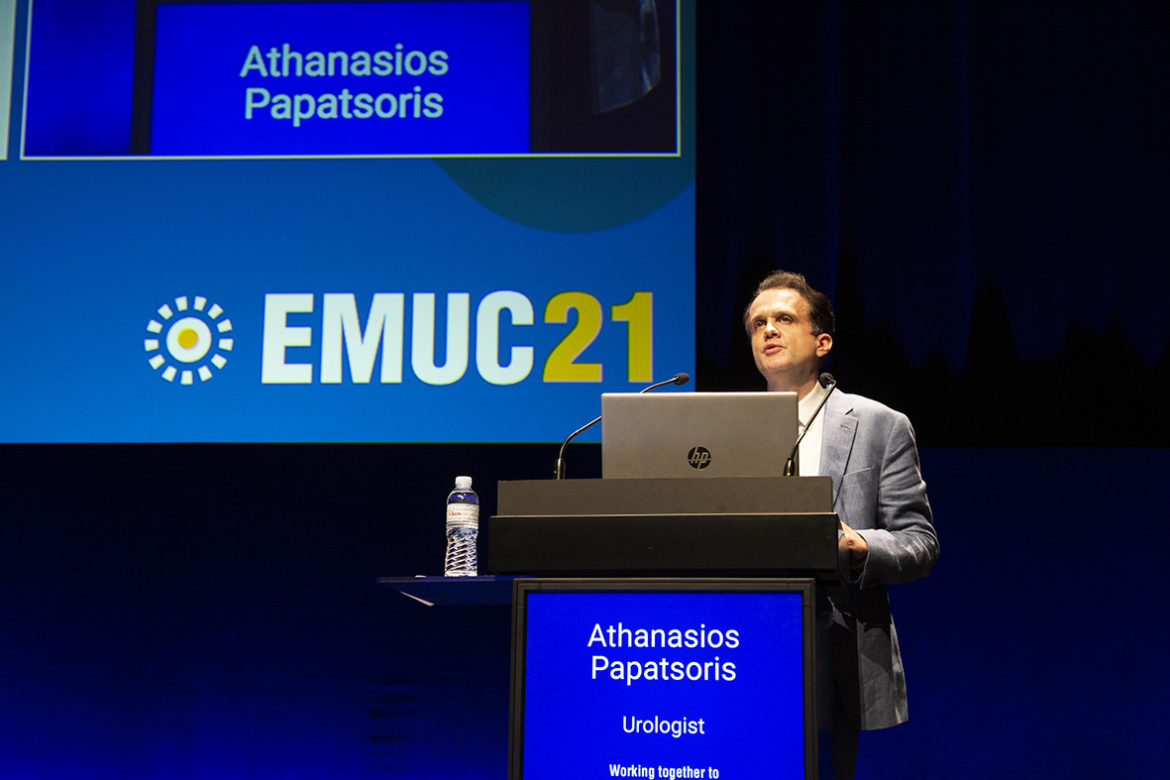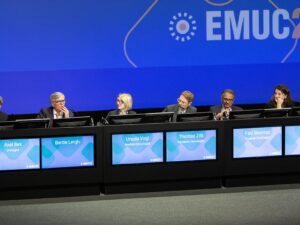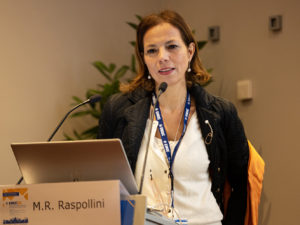In order to preserve the quality of life for non-muscle-invasive bladder cancer (NMIBC) patients as much as possible, bladder-preserving strategies are crucial. In Plenary Session 3 on the first regular day of EMUC21 in Athens, experts exchanged their knowledge of how to do this best.
After Prof. Paolo Gontero (IT) and Dr. Gianluca Giannarini (IT) had given their respective presentations on the use of biomarkers and innovative approaches, Prof. Alfred Witjes (NL) lent his expertise to answer the question of how topical therapy could be improved for bladder preservation in patients with NMIBC.
“Apply proper standard instillation principles, like dehydration and the use of correct doses and frequencies,” Prof. Witjes said. “Electro-Motive Drug Administration (EMDA) and conductive chemo-hyperthermia will certainly improve the efficacy to some extent. Radiofrequency-induced chemo-hyperthermia works and is supported by most data.”
He went on to give his vision of the future: “The Gemcitabine-Releasing Intravesical System looks interesting, but several studies into this are still ongoing. As for thermosensitive gel and liposomes, we are not there yet for NMIBC – but keep your eyes open. With regard to combination therapy, docetaxel for Bacillus Calmette-Guerin-naïve NMIBC looks promising. New forms of immunotherapy combined with intravesical therapy are under investigation.”
How to perform a high-quality TURBT
Prof. Athanasios Papatsoris (GR) gave a lecture on how to perform a transurethral resection of a bladder tumour (TURBT) of a quality as high as possible, referencing numerous studies throughout his presentation. One of them offered a “TURBT checklist,” which Prof. Papatsoris showed with his two slides below.
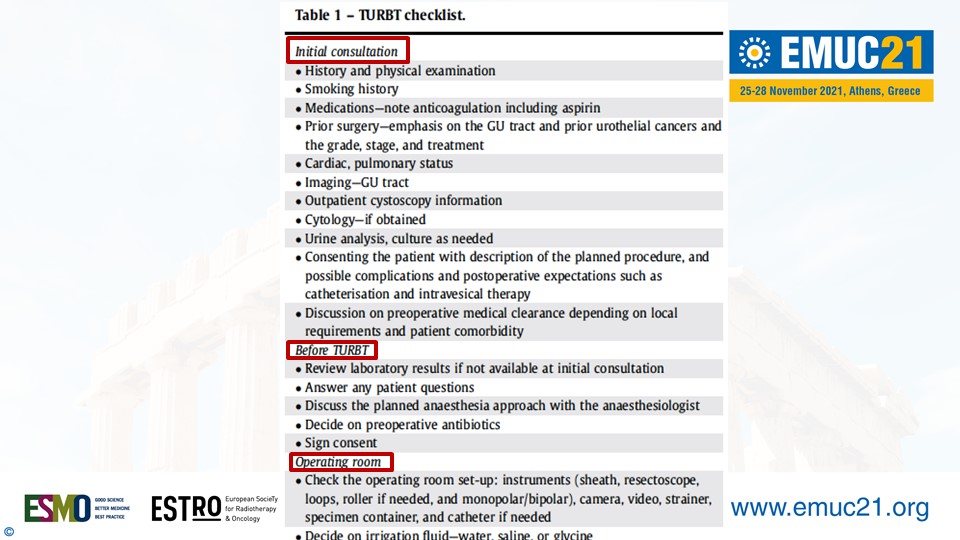
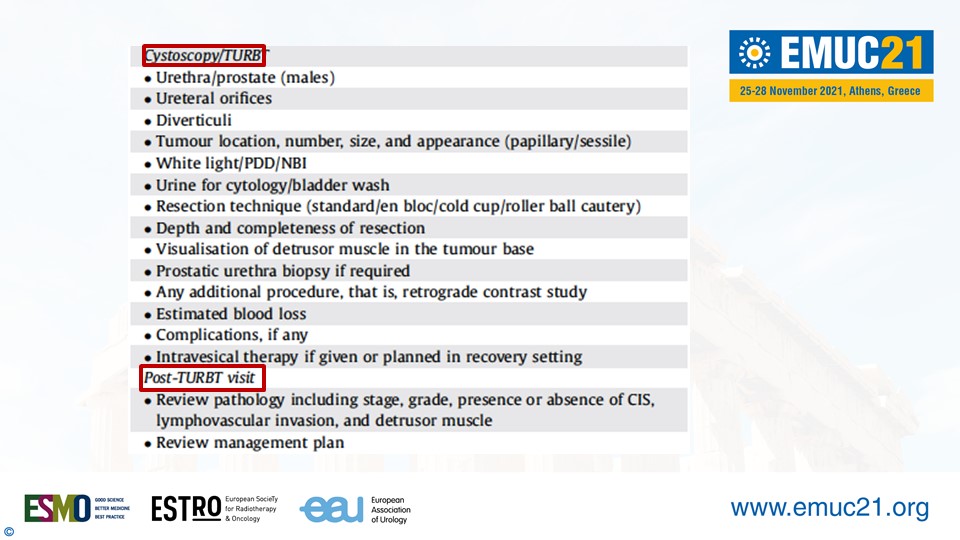
“Attention to detail and a permissive set-up are crucial to an effective TURBT,” Prof. Papatsoris explained. “We need to standardise the technique and learning curve for en-bloc TURBT. En-bloc TURBT has many potential pros, such as tumour sampling in a single piece, shortening of the procedure time and hospitalisation, and the relative reduction of complications and the need for re-TURBT. However, pathologists are not familiar with en-bloc TURBT yet and there is no consensus on the resection tool and energy source yet.”
Prof. Papatsoris ended his presentation putting the spotlight on a procedure that could combine the best of two tools, namely external beam radiotherapy (ERBT) and en-bloc TURBT. “In theory, optical molecular imaging-assisted en-bloc tumour resection integrates the advantages of both and is expected to improve the quality and completeness of transurethral tumour resection, and ultimately improve the oncological outcomes of patients with NMIBC,” Prof. Papatsoris quoted from a study in Frontiers in Oncology. “There are studies underway assessing the combination of en-bloc TURBT and molecular imaging.”
(Re)watch Prof. Papatsoris’ and Prof. Witjes’ full presentations in the EMUC21 Resource Centre. EMUC21 delegates can access all scientific content here. All presentations, full-text abstracts, and (e-)posters will become easily accessible here throughout the congress.

